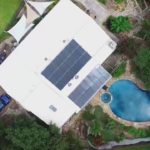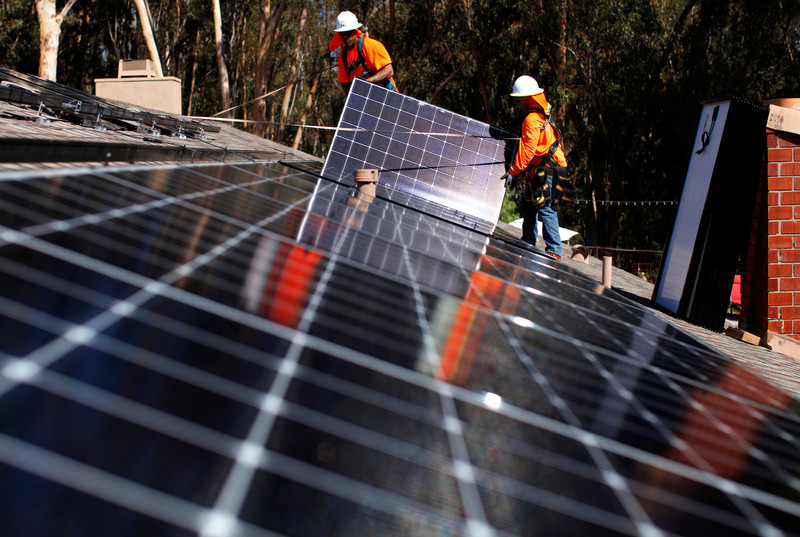The path toward solar, batteries and generators working together on whole home energy resilience and grid independence – Solar Power World
Energy Disrupter
By Georg Bettenhauser, VP business development, Upstart Power
The two primary drivers for a homeowner to make a significant investment in home energy management equipment are resilience and economics of self-generation. Environmental benefits are always a nice bonus but rarely a primary driver, except for some very early solar adopters with disposable income.
Historically, home standby generators have been deployed for resilience, while solar and solar + battery storage systems have primarily aimed at utility bill minimization.
Against the backdrop of a total addressable residential market of about 77 million homes in the United States, progress has been made leveraging both primary drivers (using Sunrun and Generac investor presentation data):
- On the self-generation track, current market penetration for solar is ~4% of households with ~3 million systems deployed. At a ~15% storage attach rate, approximately 450,000 systems include storage (~1% penetration).
- On the resilience track, with ~3.9 million units, traditional home standby generators have achieved a market penetration of ~5%.
Clearly, solar and backup technologies have just begun to scratch the surface. The untapped market potential represents a blue-ocean opportunity that undoubtedly will be hotly contested at every link in the value chain.
Two roads converging
Today’s homeowners are presented with a host of options and choices to address their need for both home energy cost minimization and energy resilience during grid outages.
Currently, a resilience-driven homeowner likely still gravitates to buying a home standby generator as insurance against grid outages. This unfortunately has no positive effect on their electricity bill, or the environment.
Meanwhile, a homeowner focused on utility bill minimization might initially buy a solar system and later add batteries with expectations of energy resilience during a grid outage. Most homeowners likely don’t understand the resilience limitations provided by batteries.
Tomorrow’s customers will expect a comprehensive whole home energy management solution and a seamless customer experience throughout their entire journey from initial engagement to ongoing post-sales support for their system.
In the context of comprehensive whole home energy resilience and grid independence, offering a prospective customer a solar or solar + storage system alone is like selling a 4-ft blanket to a 6-ft person to stay warm. Any way you slice it, something will be cold:
- Deploying only solar addresses the economic dimension of “grid independence” but leaves the short-duration and long-duration backup “energy resilience” requirements uncovered.
- Adding storage covers short-duration backup but is uneconomical for prolonged outages with insufficient sunshine.
The missing 2 ft of the energy resilience blanket — the long-duration backup gap — can be cost-effectively and eco-friendly addressed by adding a clean, safe and efficient generator that operates intermittently. Think of energy storage paired with a generator as a never-empty battery, or as solar panels that work at night.
The road ahead
If you are an independent home energy contractor, you are already living in interesting times. Equipment manufacturers for solar, batteries and generators are pursuing you to align your business with their brand and technology. You are also competing against national solar installers on a mission to accumulate control over as many residential rooftops as possible to become relevant players in the virtual power plant arena.
On the technology front, the convergence of solar, batteries and generators into a well integrated, comprehensive whole home energy solution still has a long road ahead. Look no further than the number of boxes and conduit involved in an average system installation.
While system technology is converging, you are seeing your fellow installers experimenting with a variety of diverging business models and functional specializations, deciding to outsource different parts of the value chain. While some focus on lead generation and sales, others specialize on installation or post-sales service.
The U.S. market for home energy management is most certainly not homogeneous. Evolving utility posture and state-specific incentives determine economic attractiveness, while resilience requirements are heavily driven by wildfires, hurricanes and other extreme weather events. In short, the most attractive state markets are the spot in the Venn diagram where renewable-friendly and disaster-prone environments overlap.
So, what is your path forward?
Upstart has a survey to learn more about home energy contractor views on whole home energy resilience and grid independence. Every survey participant will receive a copy of the overall results. Start survey here.
<!–
–>
Original Source: https://www.solarpowerworldonline.com/2022/06/the-path-toward-solar-batteries-and-generators-working-together-on-whole-home-energy-resilience-and-grid-independence/















